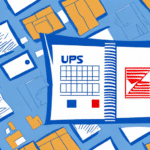Introduction to Priority Mail Insurance
When selecting a shipping method for important packages, Priority Mail is a favored choice due to its speed and reliability. However, unforeseen circumstances like loss or damage during transit can still occur. This is where Priority Mail Insurance becomes invaluable. In this comprehensive guide, we'll delve into everything you need to know about Priority Mail Insurance, including its benefits, coverage options, and tips for maximizing your protection.
What is Priority Mail Insurance?
Priority Mail Insurance is an optional service offered by the United States Postal Service (USPS) that provides financial protection for packages that are lost or damaged during transit. This insurance is particularly beneficial for shipping valuable or fragile items, ensuring that you are reimbursed for the declared value of your package if anything goes wrong.
Coverage Details
- Domestic Shipments: Up to $50 coverage for standard Priority Mail and up to $100 for Priority Mail Express.
- International Shipments: Coverage limits vary based on the destination country and the service level chosen.
It's important to note that Priority Mail Insurance covers only the actual value of the contents, not any sentimental or non-monetary value.
How Does Priority Mail Insurance Work?
When you purchase Priority Mail Insurance, you declare the value of the items you're shipping. This declared value determines the coverage amount in case of loss or damage. Here's how the process works:
- Declare Value: At the time of shipping, accurately declare the value of your package contents.
- Coverage Activation: Once declared, the insurance is active and covers the specified amount.
- Filing a Claim: If your package is lost or arrives damaged, you can file a claim with USPS to receive compensation up to the declared value.
For detailed steps on filing a claim, refer to the USPS Claims Page.
Benefits of Using Priority Mail Insurance
- Peace of Mind: Knowing your package is insured provides reassurance, especially when shipping high-value items.
- Financial Protection: In the event of loss or damage, you're reimbursed for the declared value, mitigating potential financial loss.
- Comprehensive Coverage: Includes tracking and delivery confirmation, allowing you to monitor your package throughout its journey.
- Easy Claims Process: USPS offers a straightforward online claims process, making it convenient to seek compensation.
Coverage Limits and Costs
The coverage limit for Priority Mail Insurance depends on the type of Priority Mail service you choose:
- Priority Mail: Covers up to $50 per package.
- Priority Mail Express: Covers up to $100 per package.
If you need coverage beyond these limits, USPS allows you to purchase additional insurance or consider third-party insurance providers for higher coverage options.
How to File a Claim
Should your package be lost or arrive damaged, follow these steps to file a Priority Mail Insurance claim:
- Report the Issue: Contact USPS customer service immediately to report the loss or damage.
- Complete a Claim Form: Fill out the necessary claim forms, providing detailed information about the shipment and the nature of the issue.
- Provide Proof of Value: Submit receipts or invoices that validate the declared value of the contents.
- Submit Evidence: Retain and submit any packaging or contents as evidence if applicable.
After submission, USPS typically processes claims within a few days, and if approved, you will receive compensation up to the insured amount. For more information, visit the USPS Claims Page.
Maximizing Your Priority Mail Insurance Coverage
To ensure you receive full benefits from Priority Mail Insurance, consider the following tips:
- Accurate Valuation: Always declare the true value of your items to avoid underinsurance.
- Proper Packaging: Use sturdy boxes and ample cushioning to protect your items during transit. Refer to the USPS Packaging Guidelines for best practices.
- Use Tracking Services: Utilize USPS tracking to monitor your package's status and quickly identify any issues.
- Keep Documentation: Retain all receipts, invoices, and tracking information until the package is successfully delivered.
Common Mistakes to Avoid
- Underestimating Declared Value: Declaring a lower value than the actual worth can result in inadequate compensation.
- Poor Packaging: Inadequate packaging increases the risk of damage and potential claim denials.
- Ignoring Tracking Updates: Failing to monitor your package can delay the identification and resolution of issues.
- Missing Deadlines: Filing claims promptly is crucial, as USPS has specific timeframes for claim submissions.
Comparing Priority Mail Insurance to Other Shipping Options
While Priority Mail Insurance offers valuable protection, it's essential to compare it with other shipping and insurance options to determine the best fit for your needs:
- First-Class Mail: Typically less expensive but offers limited or no insurance options, making it less suitable for valuable items.
- Third-Party Insurance: Providers like FedEx or TNT may offer higher coverage limits and additional services.
- Courier Services: Companies such as UPS provide specialized insurance and tracking features that might better suit certain shipping needs.
Evaluate factors like coverage limits, cost, and additional services when choosing the most appropriate shipping and insurance option.
Conclusion
Priority Mail Insurance is a vital service for protecting your valuable or fragile shipments against unforeseen mishaps during transit. By understanding how it works, knowing the coverage limits, and following best practices for packaging and declaration, you can ensure that your packages are well-protected and that you're financially safeguarded in case of loss or damage. Always consider comparing different shipping and insurance options to find the best solution tailored to your specific needs.






















